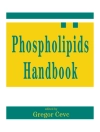This book is a concise, comprehensive and up-to-date account of fundamental concepts and potential applications of biological timekeeping mechanisms in animals and humans. It also discusses significant aspects of the organization and importance of timekeeping mechanisms in both groups. Divided into seven sections, it addresses important aspects including fundamental concepts; animal and human clocks; clock interactions; clocks and metabolism and immune functions; pineal, melatonin and timekeeping; and clocks, photoperiodism and seasonal behaviours. The book also focuses on biological clock applications in a 24×7 human society, particularly in connection with life-style associated disorders like obesity and diabetes. It is a valuable resource for advanced undergraduates, researchers and professionals engaged in the study of the science of biological timekeeping.
Tabella dei contenuti
Section I: History, Concepts, Evolution and Basic Features of Biological Clock.- Chapter 1: Biological Timekeeping: Complexity and Diversity in the Natural World.- Chapter 2: What is a Measured Rhythm.- Chapter 3: Basic Principles Underlying Biological Oscillations and their Entrainment.- Chapter 4: Significance of Waveform in Biological Oscillations.- Chapter 5: Evolution and Adaptive Significance of Biological Clocks.- Section II: Animal Clocks: Complexity and Diversity.- Chapter 6: The Drosophila Clock System.- Chapter 7: The Fish Clock System.- Chapter 8: The Reptilian Clock System: Circadian Clock, Extraretinal Photoreception and Clock-Depending Celestial Compass Mechanisms in Reptiles.- Chapter 9: The Avian Clock System.- Chapter 10: The Mammalian Neural Circadian System: From Molecules to Behavior.- Section III: Human Clocks: Implications in Regulation of Sleep and Cognition; Shift Work.- Chapter 11: Circadian Rhythms Versus Daily Patterns in Human Physiology.- Chapter 12: Effects of Light on Circadian Rhythms in Humans.- Chapter 13: Clock, Sleep and Cognition.- Chapter 14: Delayed Sleep Phase Disorder – Mechanisms and Treatment Approaches.- Chapter 15: Shift Work and Human Health.- Section IV: Clock Interactions Within and Between Individual and the Natural World.- Chapter 16: Interaction Between Central and Peripheral Clocks.- Chapter 17: Cells and Circuits for Circadian Photoentrainment in Mammals.- Chapter 18: Mechanisms of Non-Photic Entrainment.- Section V: Circadian Clocks, Metabolism and Immune Functions.- Chapter 19: Circadian Clocks and Metabolism.-Chapter 20: Clock, Hourglass and Physiology.- Chapter 21: Circadian Clocks and Immune Functions.- Section VI: Pineal, Melatonin and Biological Timekeeping.- Chapter 22: Melatonin: The Vertebrate Clock Hormone.- Chapter 23: Pineal, Melatonin and Biological Timekeeping.- Chapter 24: Melatonin and Seasonal Plasticity.- Section VII: Circannual Rhythms, Photoperiodism and Seasonal Behaviours.- Chapter 25: Circannual Rhythms.- Chapter 26: Seasonal Changes in Brain and Behavior.- Chapter 27: Photoperiodic Regulation of Initiation and Termination of Breeding in Subtropical Birds.- Chapter 28: Molecular Mechanism Regulating Seasonality.- Chapter 29: Epigenetic Regulation of Seasonality.- Chapter 30: Insights into the Regulation of Spring Migration in Songbirds.
Circa l’autore
Dr. Vinod Kumar is currently Professor of Zoology at the University of Delhi, India. He has about 4 decades of research and three-and-half decades of teaching experience in different Indian Universities. He has spent about 5 years abroad as a researcher working in different institutions other countries viz. the United Kingdom, Canada, Germany and Japan, and over more than a year-and-half as Visiting Professor working in Texas A&M University, USA. He has been awarded several international fellowships under The Indian National Science Academy – The Royal Society exchange program, DST-European Community bilateral cooperation, CIDA-NSERC Canada program, Max Planck Society post-doctoral and visting fellowship (over 5 years). He is honored with: 2010 Platinum Jubilee Lecture Award, ISCA, SRM University, Chennai; 2008 Vijay – Usha Sodha Scientific Research Prize, University of Lucknow 2006; P. Govindarajulu Gold medal from the Society of Reproductive Biology and Comparative Endocrinology, India; 2000 Young Investigator Award Gordon Research Conference in Pineal Cell Biology (Oxford, UK). He has received recognition from different international forums in the form Associate membership, regular membership and member of the scientific committees and Editorial Board of prestigious journals. He has published about 140 research publications, in most reputed journals of organismal biology, including the Proceedings of National Academy of Sciences, USA; Proceedings of Royal Society B, Journal of Pineal Research, BMC Genomics, Journal of Biological Rhythms, Chronobiology International, Molecular and Cellular Endocrinology, General and Comparative Endocrinology, Journal of Neuroendocrinology, Journal of Comparative Neurology, Physiology and Behavior, Journal of Comparative Physiology A&B, Comparative Biochemistry and Physiology A, Behavioral Brain Research, Journal of Chemical Neuroanatomy, Molecular Brain Research, Journal of Ornithology, etc. Books edited and authored byhim are: 2002 Biological Rhythms, edited (Narosa Publishing House, New Delhi/ Springer-Verlag, Germany). 1996 Animal Behaviour (Himalaya Publishing House, Bombay). He has been the most visible Indian face in the international meetings and conferences in the area of his research. He has established the state-of-art research facility in his area of research in at least 3 different institutions in India, and has trained a generation of scientists to take the field forward. He has contributed heavily for the growth of the subject by organizing Schools, conferences and Symposia, and individual trainings. He is the Secretary (and President-Elect) of the Indian Society for Chronobiology.












